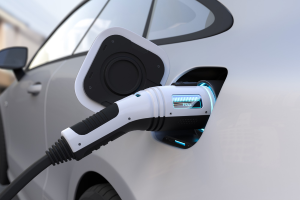As electric vehicles (EVs) become more common, understanding the different EV charging levels is crucial for maximizing efficiency and convenience. Whether you’re an EV owner or considering making the switch, knowing the differences between Level 1 charging, Level 2 charging, and Level 3 charging will help you determine the best charging solution for your needs.
This guide breaks down EV charger levels, their costs, charging speeds, and which one is best for your lifestyle. Let’s dive in!
What Are EV Charging Levels?
EV chargers are classified into three main categories based on their power output and charging speed:
- Level 1 Charging – Slowest, but can be used with a standard home outlet.
- Level 2 Charging – Faster and commonly found in homes, businesses, and public stations.
- Level 3 Charging – The fastest option, ideal for long trips and highway stops.
Now, let’s break down each charging level in detail.
Level 1 Charging: The Slow & Steady Option
What is Level 1 Charging?
Level 1 charging is the most basic way to charge an electric vehicle. It uses a standard 120V household outlet, making it convenient but slow.
Charging Speed
- Adds 3-5 miles of range per hour of charging.
- A full charge can take 24-48 hours, depending on battery size.
Where Is It Used?
- Best for overnight charging at home.
- Ideal for plug-in hybrid vehicles (PHEVs) with smaller batteries.
Cost of Level 1 Charging
- The cheapest option—only costs the electricity rate at home.
- No installation is needed—just plug into a standard wall outlet.
Pros & Cons
Pros:
- No extra equipment is required.
- Works with any home electrical outlet.
- Ideal for people who drive short distances daily.
Cons:
- Extremely slow charging.
- It is not practical for fully electric vehicles with large batteries.
Is Level 1 Charging Right for You?
If you don’t drive long distances and have time to let your car charge overnight, a Level 1 EV charger might be all you need. However, if you need faster charging, Level 2 is a better option.
Level 2 Charging: The Best Everyday Solution
What is Level 2 Charging?
Level 2 charging uses a 240V power source, making it significantly faster than Level 1. It’s the most common home and public charging option for EV owners.
Charging Speed
- Adds 25-30 miles of range per hour.
- A full charge takes 4-10 hours, depending on the EV’s battery size.
Where Is It Used?
- Homes (with a professionally installed 240V outlet).
- Public charging stations (shopping centers, parking lots, offices).
Cost of Level 2 Charging
- Home installation costs: $500 – $2,000 (for a Level 2 EV charger and electrician setup).
- Public station cost: $0.10 – $0.30 per kWh.
Pros & Cons
Pros:
- Much faster than Level 1.
- Ideal for daily use—charge overnight and wake up with a full battery.
- Widely available at public charging stations.
Cons:
- Requires a 240V outlet (home installation needed).
- Public Level 2 charging isn’t always free.
- Is Level 2 Charging Right for You?
A Level 2 EV charger is perfect for most EV owners. It offers a great balance between speed, cost, and convenience—making it the most popular choice for home and public charging.
Level 3 Charging: The Fastest Option for Road Trips
What is Level 3 Charging?
Level 3 charging, also known as DC Fast Charging, is the quickest way to charge an EV. It requires a high-powered charging station (typically found on highways and major roads).
Charging Speed
- Adds 100-250 miles of range in 20-30 minutes.
- A full charge takes 30-60 minutes, depending on the battery and charger type.
Where Is It Used?
- Highway rest stops and major urban areas.
- Tesla Supercharger stations.
Cost of Level 3 Charging
- $0.30 – $0.60 per kWh.
- Total cost per charge: $15 – $30 (varies by battery size).
Pros & Cons
Pros:
- Extremely fast charging—ideal for long trips.
- Available on major highways.
- Essential for road trip convenience.
Cons:
- Expensive compared to Level 1 and Level 2.
- Not suitable for home use (requires industrial-level power).
- Is Level 3 Charging Right for You?
A Level 3 EV charger is best for people who take frequent road trips or need quick top-ups while traveling. For everyday use, Level 2 remains the best option.
Level 1 vs Level 2 vs Level 3 Charging: Key Differences
| Feature | Level 1 Charging | Level 2 Charging | Level 3 Charging |
| Voltage | 120V | 240V | 400V+ (DC Fast Charging) |
| Speed | 3-5 miles per hour | 25-30 miles per hour | 100+ miles in 20-30 mins |
| Best For | Home use, PHEVs | Home & public use | Road trips, highway stops |
| Installation Cost | $0 (uses wall outlet) | $500 – $2,000 | Not available for home use |
| Charging Cost (per kWh) | Home electricity rate | $0.10 – $0.30 | $0.30 – $0.60 |
| Full Charge Time | 24-48 hours | 4-10 hours | 30-60 minutes |
Level 1 vs Level 2 Charging: Which One Should You Choose?
If you drive short distances and don’t mind overnight charging, Level 1 charging might work for you. However, if you want faster, more reliable charging, a Level 2 EV charger is the best long-term solution.
Level 2 vs Level 3 Charging: Do You Need Fast Charging?
For daily home use, Level 2 charging is the best option. But if you’re frequently traveling or in need of a quick charge, Level 3 charging is the fastest solution.
Final Thoughts: Choosing the Best Charging Level
Understanding the EV charging levels helps you make an informed decision about which charging option is best for your needs. Whether it’s Level 1 for occasional use, Level 2 for daily charging, or Level 3 for long trips, each has its benefits.
By knowing the differences between Level 1 vs Level 2 vs Level 3 charging, you can charge your EV efficiently and cost-effectively!




